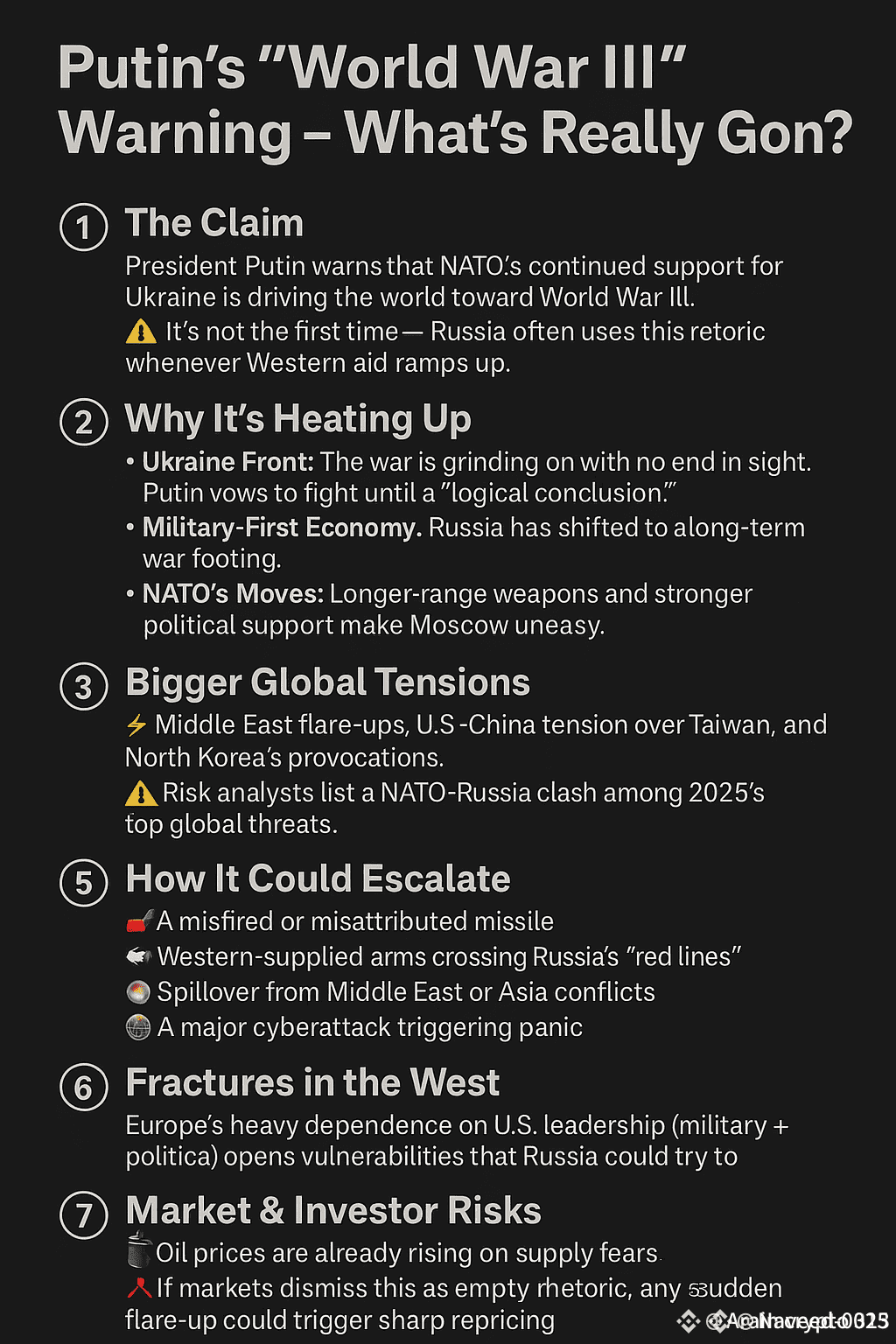
Vladimir Putin’s recent "World War III" warning has captured headlines globally, but like many such dramatic geopolitical statements, it's important to separate rhetoric from reality. Here's a breakdown of what's actually happening — and what it means.
🔥 What Did Putin Say?
In a recent speech (likely in response to Western arms shipments to Ukraine and NATO activities near Russian borders), Putin warned that escalating conflict between Russia and the West could risk "a real nuclear conflict and the start of World War III."
This isn’t the first time he’s issued such a warning — but the timing and tone matter:
He claimed that Western interference in the Ukraine war could cross a “red line.”
Putin emphasized that Russia is a nuclear power and any existential threat would be met with “retaliatory” force.
He condemned NATO’s expansion and increasing Western involvement near Russian territory.
🧠 What’s Really Going On?
1. Strategic Messaging / Psychological Warfare
Putin’s WWIII comments are aimed more at intimidating and deterring Western nations than at declaring intent. It’s part of a long-standing strategy of raising the stakes rhetorically to push the West into backing down.
> Bottom Line: He wants to freeze or limit military support to Ukraine by invoking the fear of global war
2. Tensions Are High – But Not Out of Control
NATO and the West are carefully avoiding direct conflict with Russian forces.
The Ukraine war remains a proxy conflict, not a direct NATO-Russia war.
Escalation to WWIII or nuclear war remains highly unlikely unless there’s a direct, accidental military clash between Russian and NATO forces.
> Think: brinkmanship, not active preparations for global war.
3. Domestic Audience
Putin’s rhetoric also serves a domestic purpose:
Justifies continued war efforts in Ukraine.
Reinforces the idea that Russia is a besieged fortress surrounded by hostile Western powers.
Mobilizes support by invoking national survival and pride.
🕵️ What You Should Watch For
Indicator Meaning
Sudden Russian troop build-ups on NATO borders Higher risk of miscalculation
NATO military movements or direct involvement in Ukraine Escalation trigger
Russian nuclear force alerts Significant red flag (none recently)
Diplomatic breakdowns Worsening conditions
🎯 Final Take
Putin’s "WWIII" warning is more bluff than blueprint — a mix of psychological pressure, propaganda, and strategic posturing. But it does signal how fragile the balance has become. While a full-scale world war is still very unlikely, the risk of accidental escalation or miscalculation grows with every new military shipment and battlefield shift